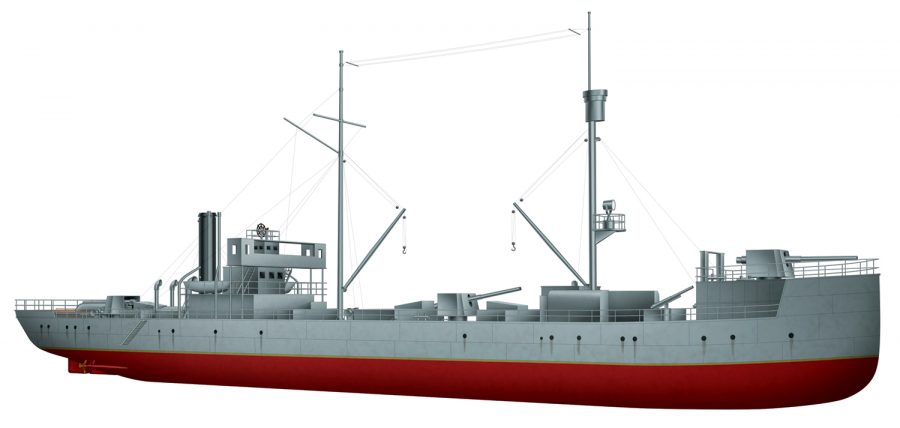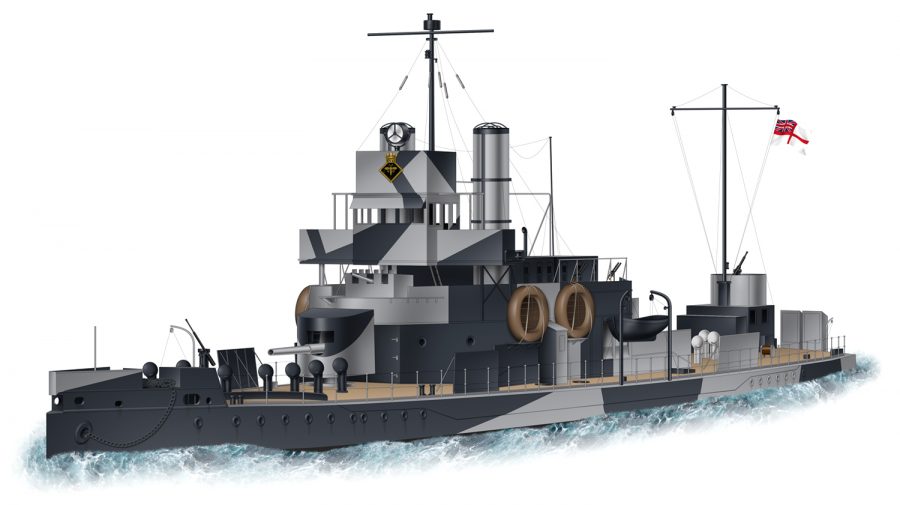Admitting the KTW-3, GK-4, SkW-1, and GBA Aquatic tanks to the competition, you got ready to field a horde of angry letters. Thryssen's went straight into the stove par the course, and Commorate Casting Company was physically frustrated at their inability to compete right away due to funding issues. The knowledge they could compete when done did get them the funds to continue, however. The Wersers were OK with you not taking their tank, apparently, which was fine-ish. They didn't like it much either, but it worked. For them.
Once you had your one demo tank from each company, you promptly got dragged out to the Sand Island Testing Facility by Gryfon. The complimentary Seebatalion Landing Craft ride was not appreciated by your stomach or your sensibilities, the accommodations inside being soaking wet and the camp stool being an utter bitch to your bad leg. When you finally arrived at Sand Island, you had to suppress a groan. Soft terrain was hell on your knee, and the staff horses available were mostly nags. You'd ridden nags back in the battery, but that was another thing entirely. First up was the water crossing, and it promised to be a bitch. Firmly believing that the best test was a surprise test, the Base Commandant had dug you three ditches as per your specifications, all fed with seawater from the channel cut and frothing with waves from it. The waves were certainly going to make this interesting.
First up was the KTW-3, trundling along placidly. After tying the logs on in front, they boldly went forth. About ten minutes in they got hideously stuck in the one-meter trench, before the engine cut out. Restarting it and using the logs as traction sources, they stolidly carried on. For the three meter trench, however, the tank tipped in, and the engine and crew compartments completely flooded, choking it out in a heartbeat. Recovery was accomplished with a set of tow chains and the SkW-1 demonstrating it's torque for days as it bodily towed the other competitor out. Further fording tests were declined as the maintenance team got to work drying out the engine and checking the various fluids reserves for contamination.
Next came the GK-4, and that was in itself a mess. Splashing through the one meter trench with a degree of wallowing and difficulty, it finally came to a halt when a track slipped off in the water. An hour of wallowing around later, and it more than happily completed the trial before moving into the three-meter pool. Diving in with aplomb, the tank was totally submerged, the stack belching smoke for a minute before an explosion ceased it, with three of the twelve of the crew bailing out. In the half hour it took to recover the vehicle, the result was plain- water had rushed into the vehicle at an uncontrolled rate, and only a few of the crew (two turret gunners, and the engineer) had managed to escape. The rest were found drowned in the tank.
After sending the bodies to the morgue and recovering the GK-4 for further testing, you got ready to admit the SkW-1 up to the plate. In the one-meter test, the tank proceed to note no significant difficulty. Approaching the three meter pool, the tank driver steadily advanced, the massive pontoons on the sides seeming to do their job well enough. A critical eye noted that the pontoons were largely submerged, however, and the waterline on the tank was remarkably consistant. Climbing out of the three meter pool, the crew let the tank drain via the bilge pump, emptied the pontoons from their seepage, and sealed everything up tight. Diving in rather dramatically, the tank managed to hold it's head out of the water for about a minute, drain pump running frantically. After that, though, a general call to abandon ship was had as the crew frantically disembarked as the tank slipped under the waves gracefully. According to the engineer, the main engine had seized, and the backup for the bilges wasn't running well enough to trust it to get them to the other side. You couldn't really yell at the fellow, considering most of the GK-4 crew would get a pine box for their efforts.
The Ghermain Brother's Auto tank was next, given the title Nasspanzer-1 and sent out to the ditches. Amazingly, the boat-like hull form worked, even if the crew of four had to spend most of their time keeping the motorcyle-engine bilge pump running at maximum capacity. After puttering through the first ditch, they proceeded to jump out, open the stopcocks, and get the tank well and drained. While the bottom may have scraped the ground to a degree in transit, it quickly got to the three meter deep ditch to begin it's treck. Much like the former, it bobbed and twitched, looking like a boat someone had slapped a gun-turret on. However, the propeller still pushed it, and it eventually reached the end of the second ditch. After another mandatory draining, the vehicle tackled the deepest trench without hesitation. The only difference between the three and five meter ditches was a distinct thunk when the Np-1 clipped the submerged turret of the SkW-1 on it's way. Once finished, the crew decided to take her out into the open ocean to climb back to dry land, firing smoke bombs with airburst fuses from the mortars in celebration.
The next day, after draining the pools and getting several tractors to tow the SkW-1 out of the ditch, you got to work on weapons testing. Before you got to shooting, though, an important note needed to go in the book- the KW-4's hot bulb engine had cracked the cases and all the bulbs, rendering it a rather large piece of scrap. For the weapons tests, the firing range would be the naval landing harbour, with three meter square targets hauled out to unknown ranges and the crews would be blasting away.
For guns testing, you got to work first with the KTW-3's gun. The 8cm breechloading mortar was a throwback piece to before your time, one of the few pieces of propper siege artillery the Irromic Empire had. Painfully short at only twenty-five calibers, it was not promising in accuracy. Testing quickly proved this out, with the target at roughly three hundred meters taking twenty-one shots to engage. Considering the twenty-eight shell ammunition supply of the tank, that could reasonably called a problem. Further targets couldn't be engaged, as ammunition for the 8cm piece was rare, and the base only had forty rounds in sum.
The next tank was the refurbished GK-4, towed into position and staffed by a Seebatalion crew of volunteers. Blasting away with a will, the three-hundred meter (ish) target took thirteen shots to engage, while a closer one hundred ish was seven shots and the longest target, at a whopping six hundred and fifty meters, took twenty seven shots to engage. Inside it's two hundred meter engagement envelope, the rotary 3,5cm gun took on average a strip of nine shells to engage each target, generally because the gunner walked his fire on it.
Following that and the base's trailer to tow it out of the way came the SkW-1, now with two hundred percent more seaweed than last time it was at the firing range. With the three hundred meter target, which had probably been blown in to about two-ninety and change given the wind, the SkW-1 proceeded to take twelve shots to engage, sinking the target raft in the process. The one hundred meter target, now held in a rough circle via anchor chain, took eight shots to hit after the third shot cracked the anchor chain and it went skedaddling out away towards the mouth of the bay. The extreme range six hundred and fifty meter target took thirty shells to engage, mostly due to the fact that the gun of the SkW-1 didn't elevate that high and the crew had to wait for it to drift closer to get their shots off, firing like mad when it was in range.
The Wp-1 was next, gunners gamely checking their peice over before the test. Due to the large boat-like qualities, there was surprisingly little room to cram in ammunition, resulting in a preparatory crate of 7,5cm shells put on the engine deck. Sure enough, they needed them after taking seventeen shots to take out the three hundred meter target. Their tank had provisions for forty rounds internally, but practically only ten were really accessible- the rest needed some conniving to get into the ready rack. Still, seventeen shots on the three hundred meter wasn't bad, although they couldn't make it out to the six hundred fifty meter target. The 7,5cm gun had been cut down to a thrity-four caliber piece for recoil reasons, slashing its range immensely. On the one hundred meter target, it only took five shots to hit- the turret's light weight made it very responsive, as well as a double-toothed elevation gear.
Defensive testing was forestalled on request of Legion-Kaptain Mair, who wished to conduct some of his own experiments on the vehicles in regards to maintenance and caretaking in an aquatic environment. Since Sand Island was his entire operating area, you acquiesced and got ready to resume testing, hopefully with the new Skoda tanks and the Commorate unit.
(Vote on continued testing, rejections, or modifications. It'll be about a week in-'verse between this and the next item.)


 Either way, I hope some trends are becoming apparent.
Either way, I hope some trends are becoming apparent.